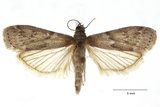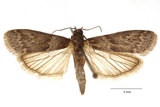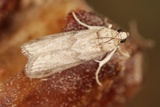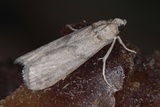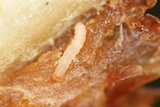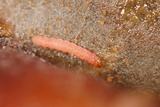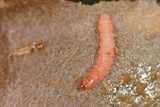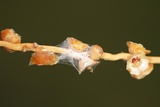Apomyelois ceratoniae (Zeller, 1839) Species
Last modified: July 13, 2024, 7:35 a.m.
A very rare and local species in Belgium, rarely recorded.
Details
- Classification
- Family: Pyralidae > Subfamily: Phycitinae > Tribus: Phycitini > Genus: Apomyelois > Species: Apomyelois ceratoniae
- Vernacular names
- Johannesbroodmot (NL), Carob Moth, Locust Bean Moth, Blunt-winged Knot-horn (EN), La Phycide de la Caroube (FR), Johannisbrotmotte, Johannesbrotmotte (DE)
- First mention in Belgium
- Fologne E. 1859b. Supplément au catalogue des lépidoptères de Belgique. — Annales de la Société entomologique belge 3: 133–142. On page 134 (as Myelois ceratoniae. Zell.). view page
- Status
-
Invasive
Apomyelois ceratoniae is considered to have originated in the Mediterranean area but it is now widely distributed.
Distribution
Egg
A female can lay up to 200 eggs.
Flight periods
The adults have been seen from mid-April towards October.
Observed on
- Substrates:
- Stored products (grain, rice, nuts, etc.)
The larva feeds on the fruits of the carob tree, but also on the fruits of many species of very different families like pistachio, citrus plants, dates, macadamia nuts and figs were it is considered an agricultural pest. Also on walnut, almond, dried figs, raisins, dry plants etc...
Habitat
Mostly found indoors in warehouses, houses, barns in dried fruit and nuts. Occasionally at light in urban areas.
